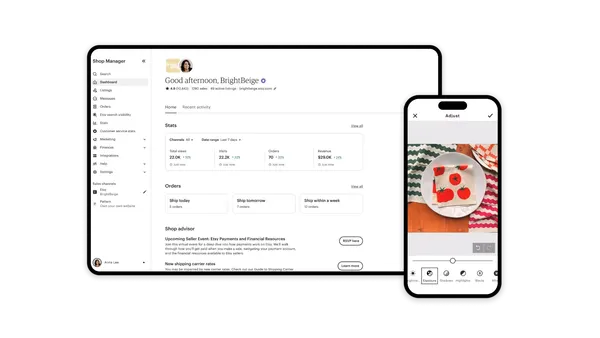Dive Brief:
-
App downloads surged to record highs in April for home improvement retailers The Home Depot, Lowe's and Menards, according to a new report by Apptopia. Home Depot's app led the way with 706,000 downloads, Lowe's was second with 527,000 and Menards reached 116,000.
-
The report also found that April downloads of Room Planner increased by 233% year over year. And though Houzz downloads in April decreased 42% from last year, the company saw a 23% increase in downloads from March.
-
Overstock's app downloads grew 32.5% year over year, and Wayfair reached a record-setting 1.7 million downloads in April, per the report.
Dive Insight:
The COVID-19 pandemic has placed a renewed focus on essential retailers, pushing them to adopt digital offerings for consumers seeking to shop safely, including partnering with delivery startups and introducing mobile checkout. Walmart, in particular, has not only seen a spike in downloads, but it has also expanded contactless payment options across delivery, pick-up and in-store transactions.
But it's not just grocers that are seeing a spike in digital activity. With much of the population working from home, Apptopia noted that many consumers are painfully aware of the improvements they need to make to their homes and, in turn, are directing their attention to home improvement, decor and furniture stores.
And while home improvement retailers like Home Depot and Lowe's are deemed essential and therefore have not had to temporarily shutter their stores, consumers may be more inclined to buy online rather than make an in-store visit. On a Tuesday conference call with analysts discussing first quarter results, Home Depot CEO Craig Menear said sales from its digital platforms increased approximately 80% in the period ending May 3. Other executives also noted that its digital business accelerated 30% in early March, but by the end of April, it had reached triple-digit growth.
For Wayfair, which has long struggled with mounting losses, the surge in app downloads might not be enough to alleviate the struggles it had already been facing. The e-commerce company earlier this month reported its first quarter direct retail net revenue grew nearly 20.3% year over year to $2.3 billion, all the while its net loss widened some 43% from last year to $286 million. The furniture retailer may not be alone in the problems it's experiencing: As nonessential businesses shift their focus to digital sales and delivery, retailers that were already struggling before the outbreak aren't holding up well as the pandemic unfolds.
It's not clear whether e-commerce sales will make up for the losses from brick-and-mortar store closures. While many consumers contend with unemployment and cut back on their discretionary spending, the pandemic could force some retailers into bankruptcy.












